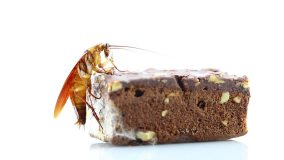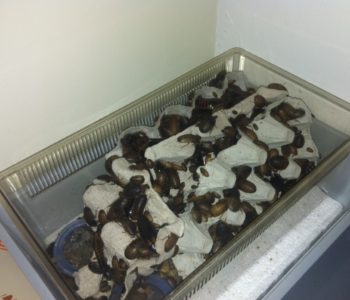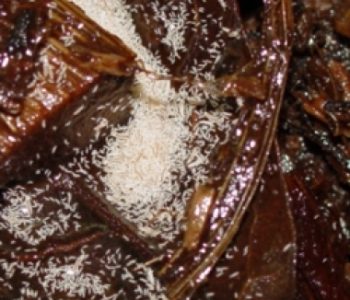 Cleaner Crews For Roaches & Bioactive Tanks
Cleaner Crews For Roaches & Bioactive Tanks
When You Buy Isopod Culture
Buy Isopod Culture For Sale – Beneficial Detritivore Microfauna For Live Vivariums More Beneficial Microfauna -Isopods For Sale
What is the best place to buy isopods? Where to buy springtails and isopods near me? When You Buy Isopod Culture From RRF. You are getting the most effective Bioactive Cleaner Crews we have specially selected for bioactive vivariums. Your Isopods should be prepared and then left alone for a month or so. Only feed and water the isopods as necessary.
This will allow the colony to expand into a much larger viable colony. Once your colony has multiplied, you may use them as feeders. Another option is to use them to seed your tanks and vivariums in order to colonize them. You should always reserve some isopods in your “Master Culture”. Maintain the culture to use indefinitely or until you need to order more to replenish.

Dwarf Species Live Isopod Cultures Isopods Are Exotics & Beneficial Microfauna For Live Vivariums
Which have not managed to establish in the US. The reason for these dwarf species not being established in the US is probably as simple as “they can’t”. These species originate in the amphibian hobby as feeder bugs. When you buy isopod culture like Dwarf Whites you are acquiring an increasingly popular feeder species. The details of their anatomy are microscopic at first. Even the largest individuals barely reach 3mm. Purple Jungle Micropods is another name for Dwarf Purple Species. They reach 2mm at most. A bit larger though still considered “dwarf” are Dwarf Greys & Dwarf Striped Isopods
When You Buy Isopod Culture That is Larger
like Armadilidum Vulgare (Common Roly Poly) and Skirted (Oniscus Asellus) are also available.. While the smaller dwarf species are common feeders for poison arrow dart frogs, other young froglets or lizards and geckos appreciate them as well. The larger species can be food for larger frogs and bearded dragons. In a pinch they are also accepted by young tarantulas and mantises, especially the softer-bodied isopods.
Unlike many other bugs, isopods mature before they reach their maximum or ultimate size. They are capable of producing offspring by the time they are half grown. After you buy isopod culture it can easily balloon with minimal care. Keep their habitat relatively moist or humid. They enjoy having a piece of bark or even a paper towel roll. They will use these items to hide in during the day. As omnivores they will eat bits of fishfood, dog or cat food. You may also offer bits of fruit and vegetable, They can also subsist on simply dried leaves and mosses from your backyard.
Buy Isopod Cultures. That Are Often Used As Effective Cleaner Crews
they are often employed for Roach & Insect Bins & Bioactive Tanks as they are effective decomposers. They will break down waste material within the tanks and vivariums. Many hobbyists, from tarantula keepers, to roach and stick-insect keepers stock their cages or enclosures with isopod Cultures as a Cleaner Crew. Isopods happily feed on frass (poop), leftover bits of feeder or prey insects. They will break down pretty much any waste material on or in the substrate. The effective Clean Up Crew should include these amazing arthropods.
Immediate Care and Handling
Please note
Some small species like Dwarf Whites are very small and very quick and can hide on the bottom of tiny pieces of wood or substrate. If your dwarf white isopods appear to be un-moving this is temporary and they may begin moving within a few minutes. If you cannot see your dwarf isopods, put them in a warm area with a small piece of fruit or fish flake and leave in the dark for 12 hours.
As soon as your cultures arrive, open the shipping container and prepare a habitat. You can use any available plastic container with a lid. Punch air holes in the lid. Next mist inside the container with room-temperature water. Place a cup or so of moist soil substrate in the bottom. Put a slice of raw potato or apple on the soil.
Empty the contents of the shipping container into the habitat. Leave in a darkened area for at least an hour. Most of the isopods should move down to the damp soil. Mist the inside of the container again and replace the lid.
Habitat Setup and Maintenance
Put 4 to 5 cm of moist substrate Like Premium ABG Substrate or RRF Tropical Floor in a terrarium. Cover the surface, preferably with leaf litter or hardwood mulch. Do not use Pine or Cedar or mulch treated with chemicals. Cover to maintain humidity. You will find the schedule that is most suited to misting the enclosure to keep it humid. Mist on a regular basis and your isopods will be happy.
Direct sunlight may kill them. Therefore, place the terrarium in indirect light. Maintain at 68 to 72º F. Soil substrate should be damp, with decaying wood, leaves, or compost in the terrarium. Mist the habitat to keep the humidity up; if mold begins to grow, increase ventilation or reduce misting. Lastly, other than humidity, isopods need little care. Feed fish food flakes, leaf litter, and pieces of raw potatoes, apples, or carrots. Immediately remove moldy food.
FAQ’s
Our isopods disappeared. Where are they?
Isopods avoid light. They are probably under some leaf litter. They may likely be burrowed into the soil. Dwarf species, especially Grey variety are very quick and disappear quickly. Leave raw potato or apple on the soil overnight. Gently lift it and you will probably find them underneath. You are more likely to observe the isopods if you keep the terrarium in a dimly lit area
In our terrarium, we are seeing lots of tiny bugs that look a bit like small pill bugs. What are they?
You have provided a good habitat for the isopods and they are reproducing. The young resemble the adults. They will be a smaller size and paler color. They will molt 4 to 5 times as they grow.
Where to buy springtails locally? Buy Springtails Cultures For Cleaner Crews or as Feeders Insects By RRF Has All You Need.




